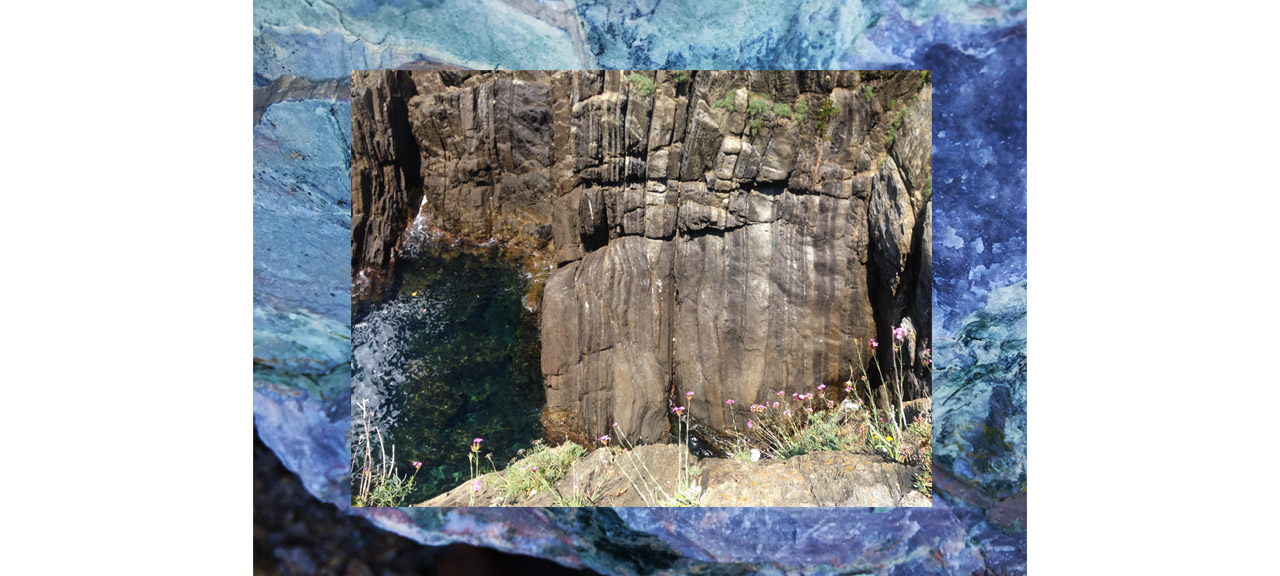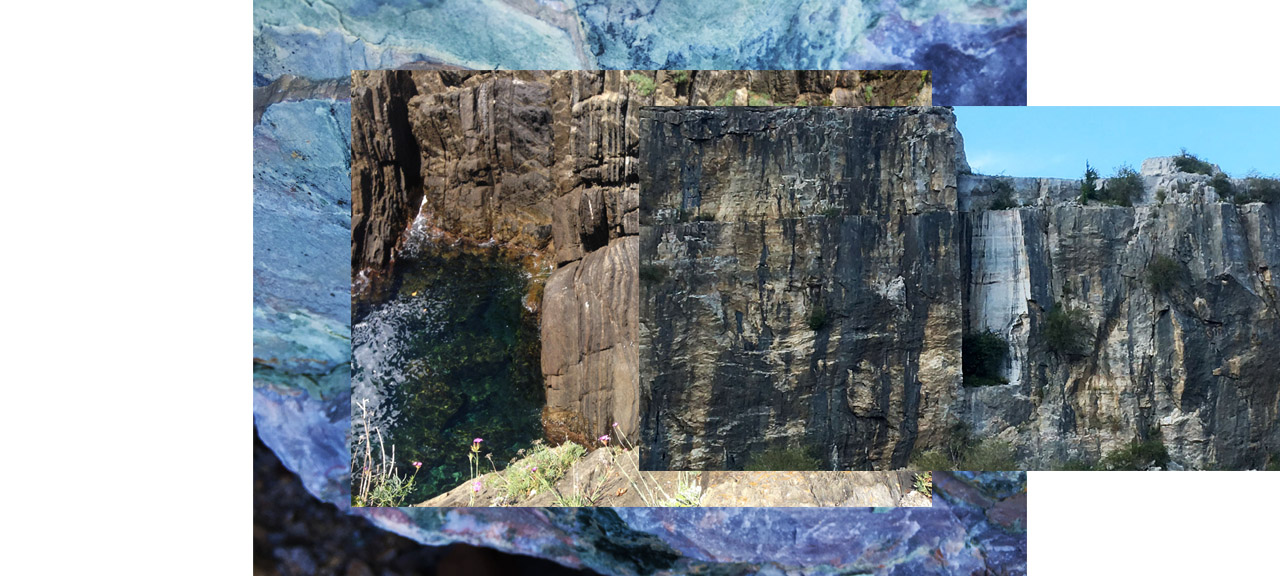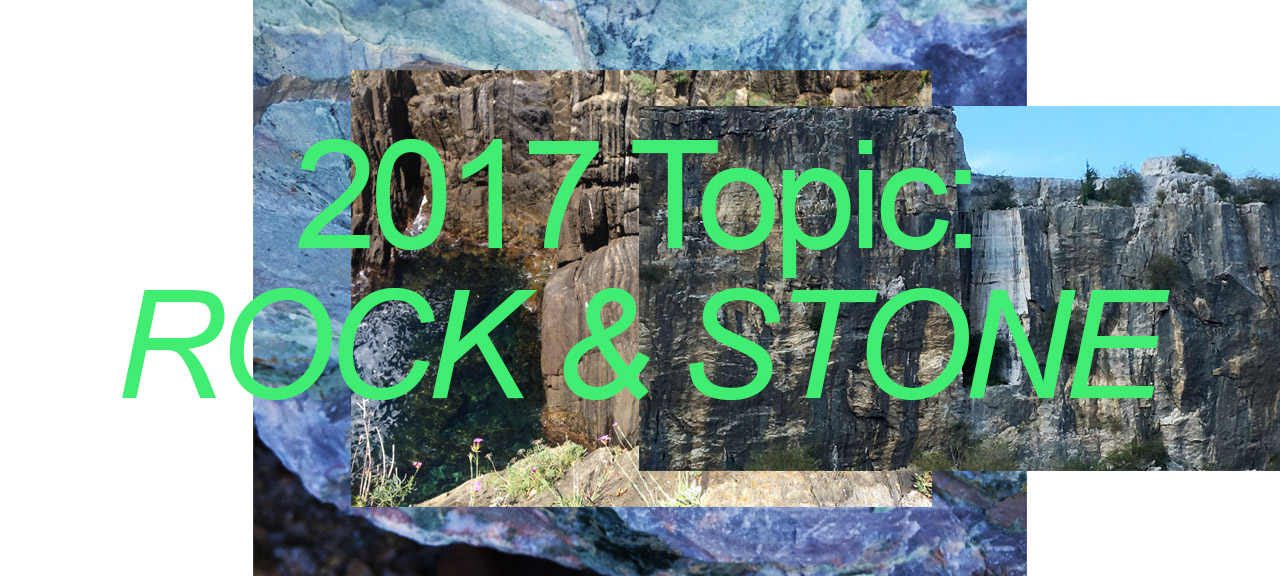NAHR’s multidisciplinary laboratory propels innovative and creative thinking. Annually dedicating research toward a specific natural element so as to examine the resiliency of the ecological systems located in Taleggio Valley, NAHR is pleased to launch the 2017 summer residency, entitled Rock and stone: material culture and cultures of making.
Rock represents the substrate of life, and gives shapes to the natural landscape, conferring character to vernacular built environments. Rock has been used for human tools, and the tradition of shaping and sculpting rocks continues today. Rock is also used to create concrete, that most common of construction materials, and it is at the basis of silicon that gives substance to the hi-tech world, a paradigm shift to mark the onset of the current Anthropocene geological age. Revealing connections between the natural and artificial, rock is both a repository of the geological past as well as a material that shapes our future.
NAHR’s 2017 theme will explore the material that also constitutes the foundations of the Taleggio Valley. Omnipresent at different scales – from the monumental mountains to the sedimented minerals, from the historical traditional architecture to structural details and small handmade objects – the presence of rock can initiate material and poetical explorations to inspire and encourage creative design actions.
Visits to quarries, walks to the mountain peaks, dedicated lectures by specialists will guide the observation and analysis of the rock surrounding NAHR, and this summer’s residency program expects to explore interactions and relationships within the valley’s ecosystem by offering site-specific investigations and opening up the possibility of a range of inter- and cross-disciplinary research opportunities.
2017 Residents may propose innovative, forwards-looking projects in two principle areas, connecting to two different scales.
Geological:
The mountains, peaks and valleys, the nearby sand and rock quarries, and the canyon drive through the “Orridi”.
Architectural:
The “baita”, rural farm construction built out of rocks and with stone-based roofs (piöde); dry walls structuring the cultivated fields; construction know-how, craftsmanship, and decorations on Liberty style building facades.
In addition to these, we suggest that rock can also represent the magic of a poetic unfolding or evolution, inasmuch as the rocks located in Taleggio Valley reflect seasonal changes, refractions and diffusions of light and shapes which find their way into the forms of local arts and crafts that continue to link us to a local cultural identity that sees, finally, the XXI century as a place for further exploration, research, and development.
Rock represents the substrate of life, and gives shapes to the natural landscape, conferring character to vernacular built environments. Rock has been used for human tools, and the tradition of shaping and sculpting rocks continues today. Rock is also used to create concrete, that most common of construction materials, and it is at the basis of silicon that gives substance to the hi-tech world, a paradigm shift to mark the onset of the current Anthropocene geological age. Revealing connections between the natural and artificial, rock is both a repository of the geological past as well as a material that shapes our future.
NAHR’s 2017 theme will explore the material that also constitutes the foundations of the Taleggio Valley. Omnipresent at different scales – from the monumental mountains to the sedimented minerals, from the historical traditional architecture to structural details and small handmade objects – the presence of rock can initiate material and poetical explorations to inspire and encourage creative design actions.
Visits to quarries, walks to the mountain peaks, dedicated lectures by specialists will guide the observation and analysis of the rock surrounding NAHR, and this summer’s residency program expects to explore interactions and relationships within the valley’s ecosystem by offering site-specific investigations and opening up the possibility of a range of inter- and cross-disciplinary research opportunities.
2017 Residents may propose innovative, forwards-looking projects in two principle areas, connecting to two different scales.
Geological:
The mountains, peaks and valleys, the nearby sand and rock quarries, and the canyon drive through the “Orridi”.
Architectural:
The “baita”, rural farm construction built out of rocks and with stone-based roofs (piöde); dry walls structuring the cultivated fields; construction know-how, craftsmanship, and decorations on Liberty style building facades.
In addition to these, we suggest that rock can also represent the magic of a poetic unfolding or evolution, inasmuch as the rocks located in Taleggio Valley reflect seasonal changes, refractions and diffusions of light and shapes which find their way into the forms of local arts and crafts that continue to link us to a local cultural identity that sees, finally, the XXI century as a place for further exploration, research, and development.
Laboratorio multidisciplinare di NAHR stimola il pensiero innovativo e creativo. Annualmente dedicando la ricerca a uno specifico elemento naturale per esaminare la resilienza dei sistemi ecologici situati nella Valle Taleggio, NAHR è lieta di lanciare la residenza estiva 2017, intitolata Rock and stone: cultura materiale e culture del fare.
La roccia rappresenta il substrato della vita e dà forma al paesaggio naturale, conferendo carattere agli ambienti costruiti vernacolari. Il rock è stato utilizzato per strumenti umani e la tradizione di modellare e scolpire le rocce continua ancora oggi. Il rock è anche usato per creare il cemento, il più comune dei materiali da costruzione, ed è alla base del silicio che dà sostanza al mondo hi-tech, un cambio di paradigma che segna l'inizio dell'attuale periodo geologico antropocenico.
Rivelando connessioni tra il naturale e l'artificiale, il rock è sia un deposito del passato geologico che un materiale che modella il nostro futuro.Il tema di NAHR 2017 esplorerà il materiale che costituisce anche il fondamento della Valle del Taleggio. Onnipresente a diverse scale: dalle montagne monumentali ai minerali sedimentati, dall'architettura tradizionale storica ai dettagli strutturali e ai piccoli oggetti fatti a mano, la presenza del rock può iniziare esplorazioni materiali e poetiche per ispirare e incoraggiare azioni creative di design.
Visite alle cave, passeggiate alle cime delle montagne, lezioni dedicate da specialisti guideranno l'osservazione e l'analisi del rock che circonda il NAHR, e questo programma di residenza estiva prevede di esplorare interazioni e relazioni all'interno dell'ecosistema della valle offrendo indagini site-specific e aprendo la possibilità di una serie di opportunità di ricerca inter- e interdisciplinare.
I residenti del 2017 possono proporre progetti innovativi e orientati al futuro in due aree principali, che si collegano a due diverse scale.
Geologica:
Le montagne, le cime e le valli, le vicine cave di sabbia e roccia e il canyon attraversano gli "Orridi".
Architettonico:
La "baita", costruzione di fattorie rurali costruite con rocce e con tetti in pietra (piöde); muri asciutti che strutturano i campi coltivati; il know-how costruttivo, l'artigianato e le decorazioni sulle facciate degli edifici in stile Liberty.
Oltre a questi, suggeriamo che il rock può anche rappresentare la magia di un dispiegamento poetico o di un'evoluzione, in quanto le rocce situate nella Valle del Taleggio riflettono cambiamenti stagionali, rifrazioni e diffusioni di luce e forme che trovano la loro strada nelle forme delle arti locali e mestieri che continuano a collegarci a un'identità culturale locale che vede, finalmente, il XXI secolo come luogo per ulteriori esplorazioni, ricerche e sviluppi.
La roccia rappresenta il substrato della vita e dà forma al paesaggio naturale, conferendo carattere agli ambienti costruiti vernacolari. Il rock è stato utilizzato per strumenti umani e la tradizione di modellare e scolpire le rocce continua ancora oggi. Il rock è anche usato per creare il cemento, il più comune dei materiali da costruzione, ed è alla base del silicio che dà sostanza al mondo hi-tech, un cambio di paradigma che segna l'inizio dell'attuale periodo geologico antropocenico.
Rivelando connessioni tra il naturale e l'artificiale, il rock è sia un deposito del passato geologico che un materiale che modella il nostro futuro.Il tema di NAHR 2017 esplorerà il materiale che costituisce anche il fondamento della Valle del Taleggio. Onnipresente a diverse scale: dalle montagne monumentali ai minerali sedimentati, dall'architettura tradizionale storica ai dettagli strutturali e ai piccoli oggetti fatti a mano, la presenza del rock può iniziare esplorazioni materiali e poetiche per ispirare e incoraggiare azioni creative di design.
Visite alle cave, passeggiate alle cime delle montagne, lezioni dedicate da specialisti guideranno l'osservazione e l'analisi del rock che circonda il NAHR, e questo programma di residenza estiva prevede di esplorare interazioni e relazioni all'interno dell'ecosistema della valle offrendo indagini site-specific e aprendo la possibilità di una serie di opportunità di ricerca inter- e interdisciplinare.
I residenti del 2017 possono proporre progetti innovativi e orientati al futuro in due aree principali, che si collegano a due diverse scale.
Geologica:
Le montagne, le cime e le valli, le vicine cave di sabbia e roccia e il canyon attraversano gli "Orridi".
Architettonico:
La "baita", costruzione di fattorie rurali costruite con rocce e con tetti in pietra (piöde); muri asciutti che strutturano i campi coltivati; il know-how costruttivo, l'artigianato e le decorazioni sulle facciate degli edifici in stile Liberty.
Oltre a questi, suggeriamo che il rock può anche rappresentare la magia di un dispiegamento poetico o di un'evoluzione, in quanto le rocce situate nella Valle del Taleggio riflettono cambiamenti stagionali, rifrazioni e diffusioni di luce e forme che trovano la loro strada nelle forme delle arti locali e mestieri che continuano a collegarci a un'identità culturale locale che vede, finalmente, il XXI secolo come luogo per ulteriori esplorazioni, ricerche e sviluppi.




